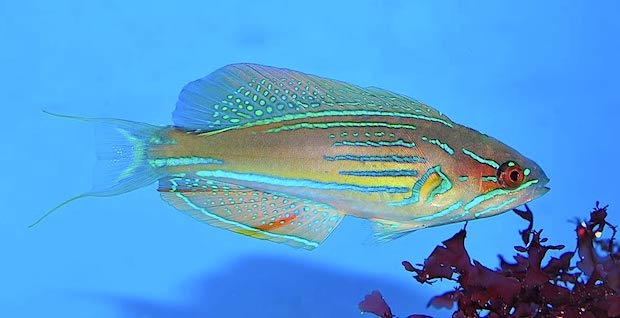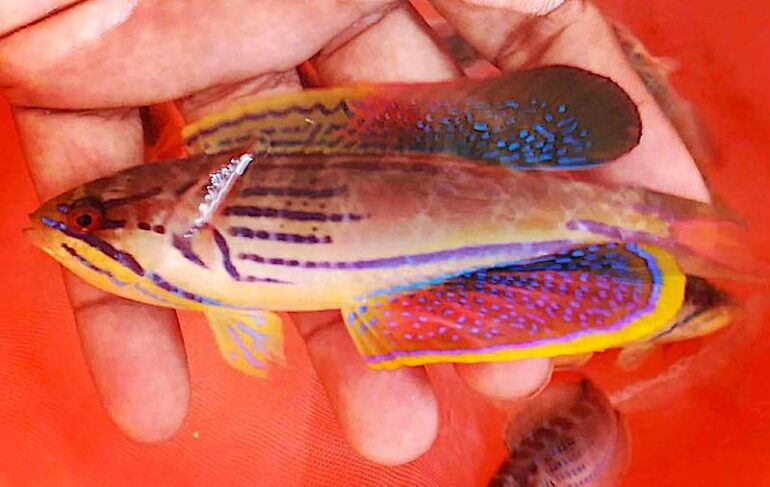The term Holy Grail is overused in the reefing hobby but this fish, Paracheilinus hemitaeniatus, is surely worthy of the title. Also known as the Madagascar or Half-banded Flasher Wrasse, this species only comes from Madagascar and adjacent coastal South African provinces and has only been in the hobby a small handful of times in the last ten years.
It’s so rare in fact that Reef Builders legend Jake Adams hadn’t even seen one in the flesh when he wrote about the last imports in 2017/2018, and our resident ichthyologist, KaiTheFishGuy, wrote that it was the rarest member of its genus and that just three fish were being circulated in the ornamental fish trade when he featured them for us in 2013. Now we’ve got to see one for ourselves – a single male being offered by rare fish specialist The Abyss in Manchester, England, and if you’re quick you’ll get to witness this bucket list fish in the flesh too.

Paracheilinus hemitaeniatus was described in 1977 by J. E Randall, and M.L. Harmelin-Vivien and occurs on outer reef slopes, rich in invertebrates, at depths from 25-50m. It’s been photographed in the wild by photographer Dennis King and featured in Rudie Kuiter’s iconic book Fairy and Rainbow Wrasses and their relatives, in 2002. Its identified by six longitudinal lines on its body and the filamentous lobes on the caudal fins of mature males. Females have the longitudinal lines too but are smaller and less spectacular.
We saw a mature male being held in a fisherman’s hands recently and it was about 6” long. The Abyss’ fish was 3-4” in length, feeding well, and probably a better size to acclimate to captivity while also providing years of viewing pleasure to come. Like all flashers, when the male Holy Grail Flasher Wrasse turns off his color and goes timid you could mistake him for other members of the genus, but when he does display it is nothing short of magnificent.
Five years ago, pre-covid pricing was around $1000 when offered in America. We thought this dream fish very reasonably priced, therefore, at £480/$590. We just need to see a Mauritian Paracheilinus piscilineatus in the flesh now, and we’re done!



